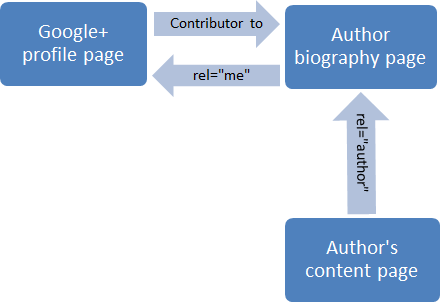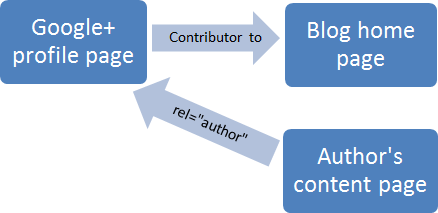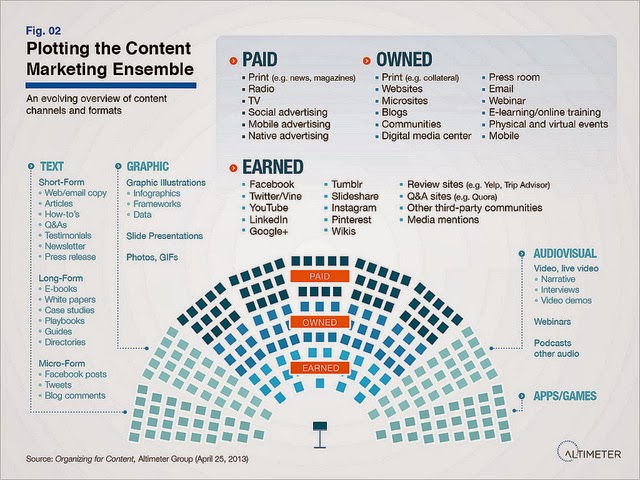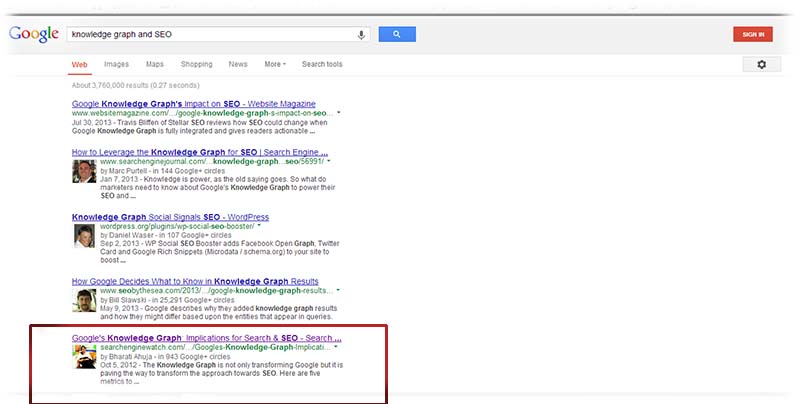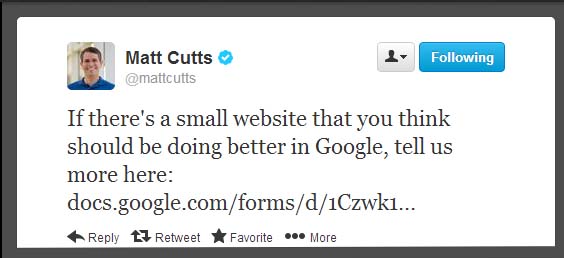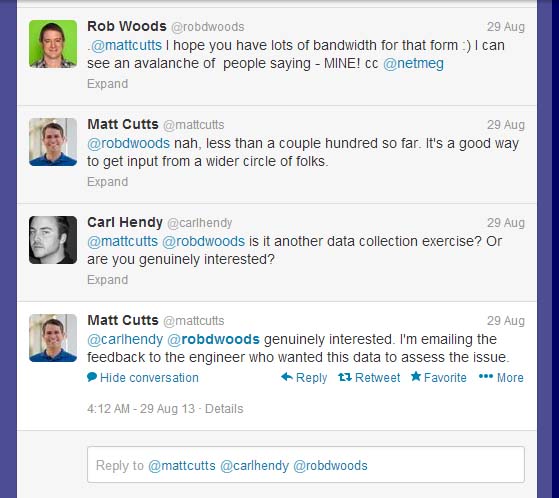Google authorship Mark up is the foundation stone for the edifice of the Knowledge Graph. The proper use of the authorship Mark up ensures the author to claim the content and thereby helps the author to establish the online thought leadership as regards a certain subject or topic. Authorship Mark up also displays the author picture in the search results when that content gets listed in the search results.
Hence, the authorship mark up helps the author to get correlated to the content as the markup uses existing standards such as HTML5 (rel=”author”) and XFN (rel=”me”) to enable search engines and other web services to identify works by the same author across the web.
The main purpose of the Authorship Mark up when it was announced by Google in June 2011 was a way to connect authors with their content on the web and use this data to help people find content from great authors in search results.
Google has made it very simple to claim the Authorship by helping the authors to implement it by the following methods:
1. 3 Link Method – (For Multi Author Blog)
2. 2 Link Method – (For A Single Author Blog)
3. Email Verification – ( Via Google+ Account)
It is very obvious that this mark up is being promoted by Google so that Google can filter the grain from the chaff and help its search engine users to get quality results and also help the users to know the person behind the published post. Moreover authors have to write informative and quality posts to prove themselves to be an authority on the subject. This requires a lot of effort and hard work from the writer’s side. It is not about just adding a piece of code or linking your Google+ account to your site and claiming oneself to be called an author. But, this is what is exactly happening – anyone who implements the above mentioned methods gets the benefit of the authorship mark up which is defeating the very purpose for which it was launched.
Ideally, the Authorship Mark up should work only on blogs but it even gets implemented when it is added to simple static brochure sites too. This I think is like spamming the search results to promote yourself as there is no content on these static site which needs to be claimed by the author. This is a very big injustice to the authors who work hard and write quality posts and try to establish their identity and promote their views because people by adding the few lines of code on any of the home page of their simple sites too get the same benefit in SERPs like the one who has claimed the authorship markup by creating and maintaing a blog by adding quality content regularly.
I think Google should work on this and only blogs publishing quality content regularly should get the true benefit of the Authorship Mark up and the business sites on which this mark up is found should not be considered at all. Another nuisance about this markup is that instead of the author’s pic. Many times the website owners want their picture to be displayed in SERPs which again is very misleading. In such cases if the content written by any author is the owned by the business the Publisher Markup needs to be implemented where instead of the picture of the author the company logo is displayed which correlates the company with the content. This helps the user to know the ideology of the company as that content is claimed by the company rather than the writer.
Content Marketing has become the life line to attain quality web presence. The content and the creator cannot be separated hence the right use of the Authorship Mark up and the Publisher Mark up helps to send the right signals to the Knowledge Graph which is getting updated and built with every piece of content which gets correlated to your web identity.
